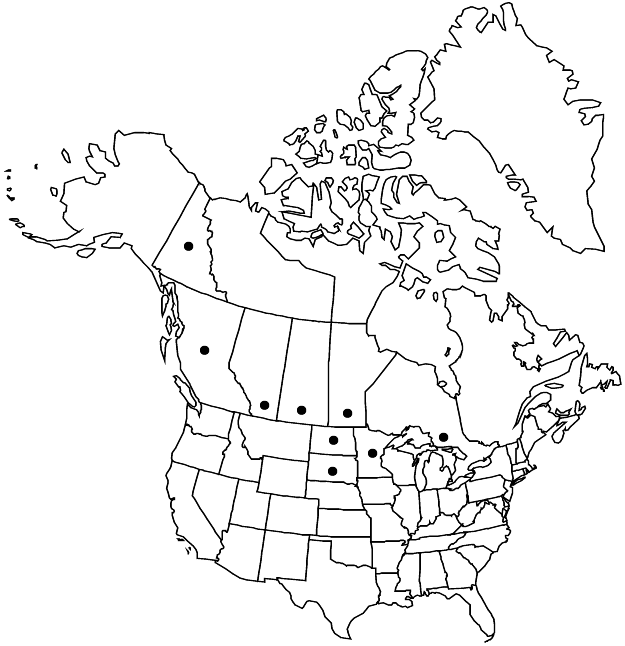Difference between revisions of "Rumex pseudonatronatus"
Bot. Not. 1899: 16. 1899.
FNA>Volume Importer |
FNA>Volume Importer |
(No difference)
| |
Revision as of 22:31, 16 December 2019
Plants perennial, glabrous or very indistinctly papillose normally only on branches of inflorescences, or on veins of leaf blades abaxially, with fusiform, vertical rootstock. Stems erect, branched from above middle, 50–120(–150) cm. Leaves: ocrea deciduous or partially persistent at maturity; blade lanceolate to narrowly lanceolate or lanceolate-linear, normally 15–30 × 1–4 cm, apex acute. Inflorescences terminal, occupying distal 1/2 of stem, normally dense in distal part and interrupted at base, narrowly paniculate, branches usually straight or slightly arcuate. Pedicels articulated in proximal 1/3, filiform, 4–9 mm, articulation distinctly swollen. Flowers 15–25 in whorls, inner tepals orbiculate, ovate-orbiculate, or indistinctly reniform, 3.5–5(–6) × 3–5 mm, base slightly cordate, margins entire or rarely subentire to very weakly erose, undulate or nearly flat, apex obtuse or rounded, occasionally subacute; tubercles normally absent, sometimes with 1 indistinct tubercle or slightly thickened midvein less than 1–1.3 mm wide, normally less than 2 times as wide as inner tepals. Achenes usually reddish brown, 2–2.5 × 1–1.5 mm. 2n = 40.
Phenology: Flowering late spring–summer.
Habitat: Ruderal and alluvial habitats, slightly saline soil, waste places, roadsides, shores of rivers and lakes, meadows, cultivated fields
Elevation: 10-1000 m
Distribution

Alta., B.C., Man., Ont., Sask., Yukon, Minn., N.Dak., S.Dak., e Europe, c Asia (Siberia).
Discussion
Rumex pseudonatronatus often is confused with R. longifolius and R. crispus.
Selected References
None.